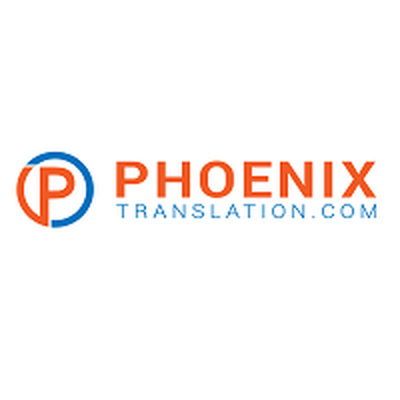Top 5 Documents That Require Professional Medical Translation Services
Posted By Phoenix Translation
Body
Medical document translation is the process of converting important healthcare information from one language to another while maintaining accuracy and clarity. This specialized translation requires deep knowledge of medical terminology, healthcare practices, and cultural differences. When medical documents are translated correctly, they help patients understand their health better, doctors provide better care, and medical companies reach more people across different countries and languages.
Why Medical Translation Needs Special Care
Healthcare information is not like other types of content. Mistakes in medical translations can have serious consequences - they might lead to wrong treatments, missed diagnoses, or even harm to patients. This is why medical document translation services are so important.
Regular translators might know languages well, but they often lack the specific medical knowledge needed for healthcare documents. Medical translators need to understand complex terms like "myocardial infarction" (heart attack) or "cerebrovascular accident" (stroke) in both languages.
The healthcare field also has strict rules about accuracy and privacy. Professional medical document translation services understand these requirements and follow them carefully.
Document 1: Patient Consent Forms
Consent forms are papers that patients sign to show they understand and agree to medical procedures. These forms explain:
• What the procedure involves
• Possible risks and benefits
• Alternative treatment options
• What happens after the procedure
When patients don't speak the same language as their doctors, these forms must be translated accurately. If a patient doesn't fully understand what they're agreeing to because of poor translation, it can lead to legal problems for healthcare providers and potential harm to patients.
Good medical document translation services make sure consent forms are clear, complete, and culturally appropriate. They use words that patients can understand, not just direct translations of complex medical terms. This helps patients make informed decisions about their health care.
Document 2: Medical Records and Patient History
Medical records contain a patient's complete health information, including:
• Past illnesses and conditions
• Medications and allergies
• Previous surgeries and treatments
• Test results and doctor's notes
When patients move between countries or see doctors who speak different languages, these records need accurate translation. A small mistake, like mistranslating a medication dosage or allergy information, could put a patient's life at risk.
Professional medical document translation services have systems to maintain consistency across all patient documents. They create glossaries of terms for each patient to make sure important medical information is translated the same way every time.
Document 3: Clinical Trial Documentation
Medical research often happens across multiple countries. This requires translating many documents like:
• Research protocols (plans for how the study will be conducted)
• Informed consent forms for study participants
• Case report forms that collect data from patients
• Adverse event reports about side effects
These documents must follow strict rules set by organizations like the Food and Drug Administration (FDA) in the US or the European Medicines Agency (EMA).
Medical document translation services with experience in clinical trials understand these regulations. They help research teams collect accurate data across different countries and languages. This allows life-saving treatments to be developed more quickly and safely.
Document 4: Medical Device Documentation
Medical devices need clear instructions for both healthcare providers and patients. These include:
• User manuals and quick-start guides
• Installation and maintenance instructions
• Safety warnings and precautions
• Training materials for medical staff
Poor translation of device instructions can lead to improper use, device failures, or patient injuries. In many countries, translated documentation must meet specific legal requirements before devices can be sold.
Professional medical translators understand both the technical aspects of medical devices and how to explain them clearly. They make sure instructions are easy to follow, even for people with limited medical knowledge.
Document 5: Public Health Information and Educational Materials
During health emergencies or for ongoing health education, clear information in multiple languages saves lives. These materials include:
• Disease prevention guidelines
• Vaccination information
• Symptom recognition guides
• Treatment instructions for common conditions
These documents need to be not just technically accurate but also culturally appropriate and easy to understand. Medical document translation services know how to adjust health messages for different cultural contexts while maintaining the core medical information.
For example, during the COVID-19 pandemic, hospitals and public health departments relied on professional medical translators to create accurate vaccination information in dozens of languages. This helped reach immigrant communities and reduced the spread of misinformation.
Choosing the Right Medical Translation Partner
When looking for medical document translation services, healthcare organizations should consider:
• Experience with specific types of medical content - translators familiar with your field will understand the terminology better.
• Knowledge of relevant regulations - different countries have different rules for medical information.
• Quality control processes - medical translations should always be reviewed by multiple experts.
• Privacy and security measures - medical information needs to be kept confidential during the translation process.
By working with specialized medical translators, healthcare providers can ensure their important documents are accessible to all patients, regardless of language. This improves patient care, reduces risks, and helps medical organizations succeed in our increasingly connected world.
Why Medical Translation Needs Special Care
Healthcare information is not like other types of content. Mistakes in medical translations can have serious consequences - they might lead to wrong treatments, missed diagnoses, or even harm to patients. This is why medical document translation services are so important.
Regular translators might know languages well, but they often lack the specific medical knowledge needed for healthcare documents. Medical translators need to understand complex terms like "myocardial infarction" (heart attack) or "cerebrovascular accident" (stroke) in both languages.
The healthcare field also has strict rules about accuracy and privacy. Professional medical document translation services understand these requirements and follow them carefully.
Document 1: Patient Consent Forms
Consent forms are papers that patients sign to show they understand and agree to medical procedures. These forms explain:
• What the procedure involves
• Possible risks and benefits
• Alternative treatment options
• What happens after the procedure
When patients don't speak the same language as their doctors, these forms must be translated accurately. If a patient doesn't fully understand what they're agreeing to because of poor translation, it can lead to legal problems for healthcare providers and potential harm to patients.
Good medical document translation services make sure consent forms are clear, complete, and culturally appropriate. They use words that patients can understand, not just direct translations of complex medical terms. This helps patients make informed decisions about their health care.
Document 2: Medical Records and Patient History
Medical records contain a patient's complete health information, including:
• Past illnesses and conditions
• Medications and allergies
• Previous surgeries and treatments
• Test results and doctor's notes
When patients move between countries or see doctors who speak different languages, these records need accurate translation. A small mistake, like mistranslating a medication dosage or allergy information, could put a patient's life at risk.
Professional medical document translation services have systems to maintain consistency across all patient documents. They create glossaries of terms for each patient to make sure important medical information is translated the same way every time.
Document 3: Clinical Trial Documentation
Medical research often happens across multiple countries. This requires translating many documents like:
• Research protocols (plans for how the study will be conducted)
• Informed consent forms for study participants
• Case report forms that collect data from patients
• Adverse event reports about side effects
These documents must follow strict rules set by organizations like the Food and Drug Administration (FDA) in the US or the European Medicines Agency (EMA).
Medical document translation services with experience in clinical trials understand these regulations. They help research teams collect accurate data across different countries and languages. This allows life-saving treatments to be developed more quickly and safely.
Document 4: Medical Device Documentation
Medical devices need clear instructions for both healthcare providers and patients. These include:
• User manuals and quick-start guides
• Installation and maintenance instructions
• Safety warnings and precautions
• Training materials for medical staff
Poor translation of device instructions can lead to improper use, device failures, or patient injuries. In many countries, translated documentation must meet specific legal requirements before devices can be sold.
Professional medical translators understand both the technical aspects of medical devices and how to explain them clearly. They make sure instructions are easy to follow, even for people with limited medical knowledge.
Document 5: Public Health Information and Educational Materials
During health emergencies or for ongoing health education, clear information in multiple languages saves lives. These materials include:
• Disease prevention guidelines
• Vaccination information
• Symptom recognition guides
• Treatment instructions for common conditions
These documents need to be not just technically accurate but also culturally appropriate and easy to understand. Medical document translation services know how to adjust health messages for different cultural contexts while maintaining the core medical information.
For example, during the COVID-19 pandemic, hospitals and public health departments relied on professional medical translators to create accurate vaccination information in dozens of languages. This helped reach immigrant communities and reduced the spread of misinformation.
Choosing the Right Medical Translation Partner
When looking for medical document translation services, healthcare organizations should consider:
• Experience with specific types of medical content - translators familiar with your field will understand the terminology better.
• Knowledge of relevant regulations - different countries have different rules for medical information.
• Quality control processes - medical translations should always be reviewed by multiple experts.
• Privacy and security measures - medical information needs to be kept confidential during the translation process.
By working with specialized medical translators, healthcare providers can ensure their important documents are accessible to all patients, regardless of language. This improves patient care, reduces risks, and helps medical organizations succeed in our increasingly connected world.








Comments